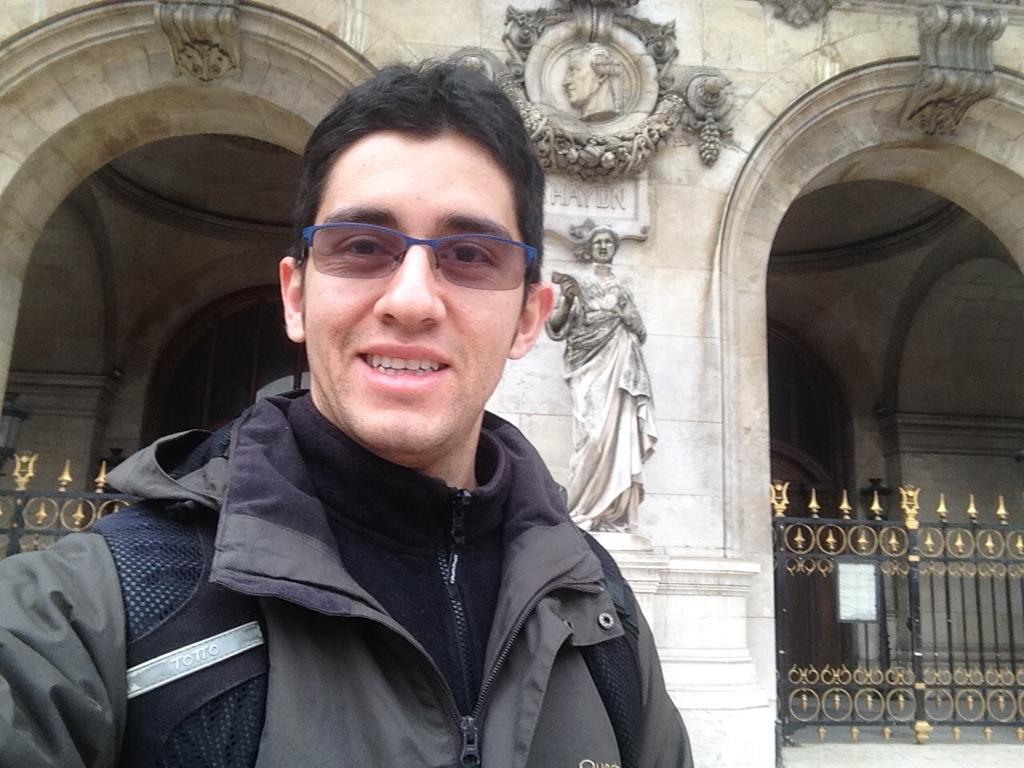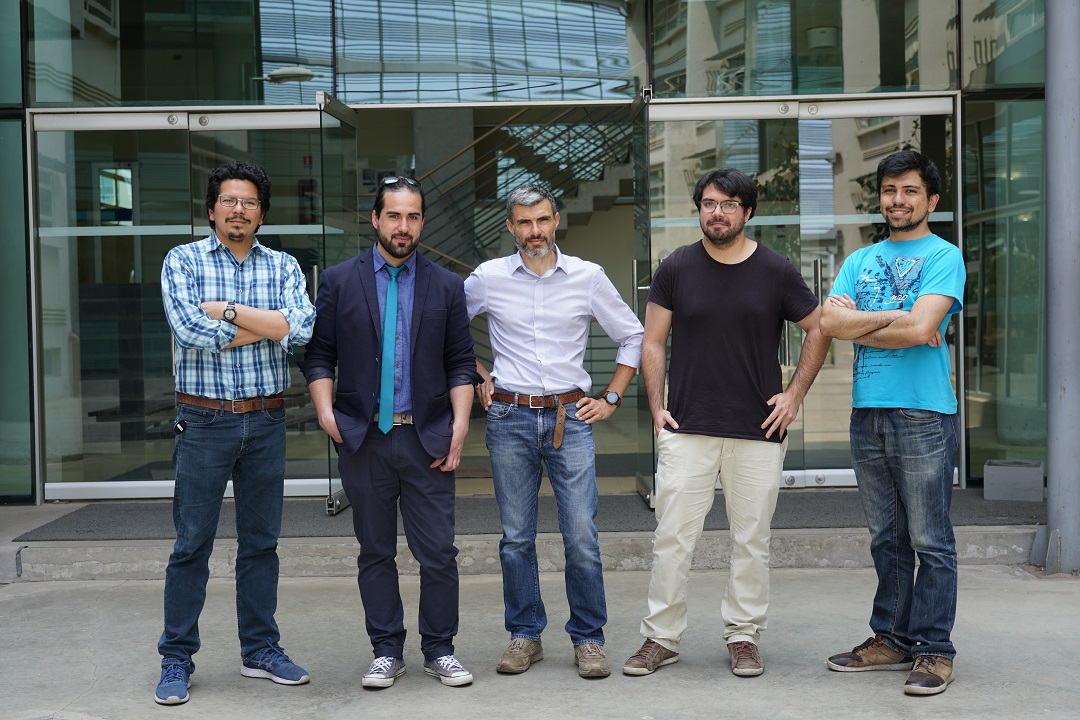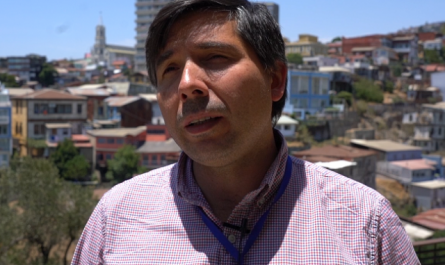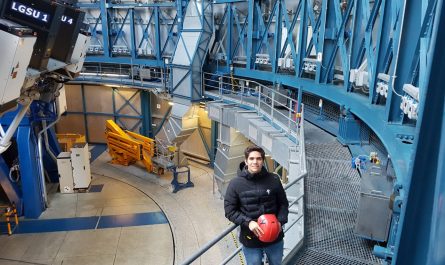The Center for Adaptive Optics of Valparaíso (CAOVA), project headed by Dr. Esteban Vera, from the optoelectronics lab of the PUCV’s School of Electrical Engineering, and Dr. Darío Pérez, from the atmospherical and statistical optics of the PUCV’s Physics Institute, have received his first postdoctoral researcher, who will develop his tasks under the difractive optics umbrella remotely.
Who we talk about is Nelson Díaz, Systems Engineer of the Industrial University of Santander, Colombia, who also obtained his M.Eng. on Systems Engineering and his PhD. by said institution. As a result of his addition to our research team, we had an interview with him to know more about his work, as it follows:
How did the interest in electrical engineering, electronics, optics and stuff, as a field of knowledge, get started for you?
Nelson (N): Everything was strengthened with my M.Eng in the UIS, somewhere around 2014. The thing was, I was working in the UIS, and, at that moment, a professor who completed his PhD. came back from the University of Delaware, US, place where he had worked with optics, imaging, digital processing, algorithms, among other topics. He made a conferences series, and, well, because I liked the theme, I ended up studying my master’s with him.
How you started to collaborate with Dr. Vera and the CAOVA?
N: We met at the Imaging and Applied Optics Congress that was made by the Optical Society of America (OSA) in San Francisco, US, where Dr. Vera did a presentation. It was such a coincidence that I did a presentation too and also a poster. Due to the fact that this is an american event, the probability and quantity of latin american or even hispanic speakers that are doing research in these areas is very scarce, in no case, related to the number of participants, so, this was a very valuable encounter. That was how the situation happened. So Dr. Vera met my director, Dr. Henry Arguello, who was the professor I was referring previously. This is how the collaboration arm was established, and well, after my graduation this year, searching specific opportunities of posdoctoral research, I found that Dr. Vera had one available so I accepted.
How do you see the interest in optoelectronics and its derivative topics?
N: I noticed that sometimes a lot of students don’t participate in research due to ignorance, not because they didn’t like it. Once it is given to them the themes and they see the applications, for example, in astronomy or medicine, they are draw their attention to this. I think these are areas that are having a big boom recently. Another thing is that Chile is highly famous from its astronomy development, and that was, in fact, where my particular interest to apply to this position.
What did you do in your PhD. thesis previously to collaborate with the Center?
N: My PhD. thesis is about adaptive systems, which generally are applied to optics. In summary, is a camera that is watching the signal of our interest that you want to capture, so you can do some calculations and improvement in the way the image is captured. So my thesis was about this idea, and how to apply this to another tasks, such as classification, video or even reconstruction.
What are you doing in your posdoctoral research and which tasks are included in your planification?
N: I’ll continue the research area that I mentioned previously. Specifically, I’ll work with difractive optics systems, which are a way to codify the light and that are being watched because they seem to have plenty of interesting features, and also, they allow you to do compression to the image even when the capture process is being realized. If I should give it a title to this, it will be difractive optics. Another thing that we are going to explore is the AI part on this, in particular, which is known as deep learning. This have been very famous lately, because it has plenty of applications, and is the computational optics that have demostrated highly sufficiency over the current state in theory, using the training of a computer so it will be able to do certain tasks. This is expected to be part of a one year of work, with the possibility of extend my collaboration, which I’m now considering.
Are you going to have an opportunity to show your work?
N: Yes. We do not have an assigned due date, but we would be interested to send our results to a journal or some conference. The professor told me the possibility to have a publication in some high impact scientific magazine, so we’re seeing how to do the best to complete this idea. This, of course, is expected to be done at the beginning of the next year.
Have you had any difficulties due to the pandemic situation that we’re going through to develop your job?
N: The more difficult part is the experimentation. Not be able to have access to the laboratory so we can obtain data due to the health restrictions… that have an impact in ourselves where we have to reschedule everything, from the work plan to the proper actions to follow. Interact among us with Skype or any other tool for video conference isn’t necessarily unknown at this point.
Ho do you see professionally in the next future? which message would you send to those who are starting in these areas of research?
N: I want to continue with the research. I think is a space very motivating. My message for the new generations is: culvitate yourselves a lot in basic sciences, physics, math and also in engineering. In this space where I work, computational imaging, you need more than one knowledge, is very multidisciplinary, so it will be very helpful to the students if they can learn in this way, from basic sciences, not only physics, math or engineering as such, but also if they have the opportunity to see others areas or sciences.
Learn more about the opportunities of the Center for Adaptive Optics of Valparaiso (CAOVA) and the optoelectronics lab of the PUCV’s School of Electrical Engineering, in their official websites.





